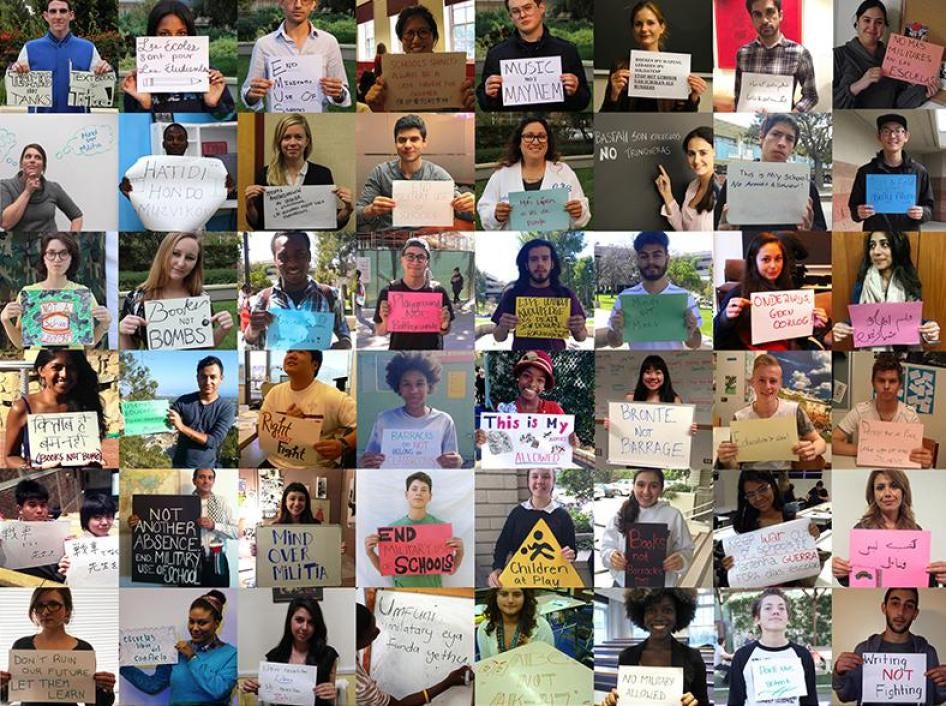(New York) – Countries around the world are taking measures to protect students, teachers, and schools from the harmful consequences that can result from the use of schools for military purposes during times of armed conflict, Human Rights Watch said in a report released today.
The 101-page report, “Protecting Schools from Military Use: Law, Policy, and Military Doctrine,” contains examples of law and practice from 40 countries, from Afghanistan to Yemen, instituting some level of protection for schools or universities from military use. Many of the examples come from countries currently or recently involved in armed conflict, indicating that governments and armed forces are recognizing the negative consequences of military use of schools and have found practical solutions to deter such use. Examples of these measures can be found throughout the world, in legislation, court decisions, and military policies and doctrine. Governments should adopt and follow protections for schools, Human Rights Watch said.
“In most countries enduring armed conflict, schools have been turned into part of the battlefield, as classrooms have been converted into military bases, bunkers, and weapons caches,” said Bede Sheppard, deputy children’s rights director at Human Rights Watch. “Yet increasing numbers of countries are making a commitment to keep the conflict out of their schools, and they’re providing examples of measures to protect schools from military use.”
On March 28 and 29, 2017, Argentina will co-host the Second International Conference on Safe Schools, which will bring together government representatives from around the world in Buenos Aires to discuss the global problem of attacks on students, teachers, and schools, and the related issue of military use of schools.
Human Rights Watch also reviewed the various protections for schools from military use under international law and standards, including the Safe Schools Declaration, adopted in 2015. The Safe Schools Declaration is a political commitment for countries to take certain concrete steps to make students, teachers, and schools safer during times of armed conflict, including by agreeing to refrain from using schools for military purposes.
It was drafted under the leadership of Norway and Argentina in 2015. To date, 59 countries have endorsed the declaration, and more are expected to join at the upcoming conference in Argentina.
Since 2007, the military use of schools or universities by government armed forces and non-state armed groups has been documented in at least 29 countries with armed conflict or insecurity, according to the Global Coalition to Protect Education from Attack, of which Human Rights Watch is a member. That number represents the majority of countries experiencing armed conflict during the past decade.
Schools and universities have been taken over either partially or entirely to be converted into military bases and barracks; used as detention and interrogation facilities; for training fighters; and to store or hide weapons and ammunition.
Since 2009, Human Rights Watch has investigated the military use of schools in Afghanistan, the Democratic Republic of Congo, the Central African Republic, India, Iraq, Pakistan, Palestine, the Philippines, Somalia, South Sudan, Syria, Thailand, Ukraine, and Yemen.
The use of schools for military purposes endangers students’ and teachers’ safety, can lead to the damage and destruction of important education infrastructure, and can interfere with students’ right to education, Human Rights Watch said.
“When government leaders know that they can take practical steps to keep students safe during war, they should feel morally obliged to take them,” Sheppard said. “All countries should endorse the Safe Schools Declaration and acknowledge that the military use of schools is a global problem, needing international attention and response.”












